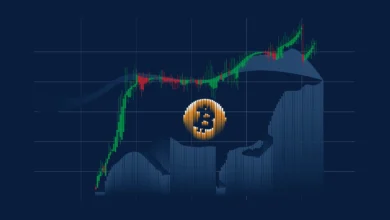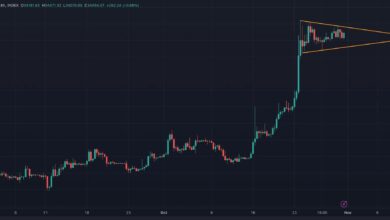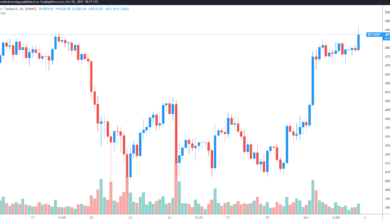
Bitcoin Price index Live chart & USD Market cap
The Bitcoin price index has become the cornerstone of cryptocurrency market analysis, serving as the primary benchmark for digital asset valuations worldwide. As the first and most prominent cryptocurrency, Bitcoin continues to dominate headlines, investment portfolios, and market discussions across global financial platforms. The Bitcoin price index, its live chart patterns, and USD market cap dynamics are crucial for both novice and experienced investors navigating the volatile cryptocurrency landscape.
The Bitcoin price represents more than just a number on a screen—it reflects the collective sentiment of millions of investors, institutional adoption rates, regulatory developments, and technological advancement in blockchain infrastructure. The BTC price serves as a gateway indicator for the entire cryptocurrency market, often dictating the direction of altcoin movements and overall market sentiment.
This comprehensive guide explores every aspect of Bitcoin price tracking, from real-time live charts to analyzing market capitalization trends. Whether you’re monitoring Bitcoin USD pairs for trading opportunities or seeking long-term investment insights, mastering the Bitcoin price index is essential for making informed decisions in the rapidly evolving digital asset ecosystem.
The significance of Bitcoin price analysis extends beyond individual trading decisions. Institutional investors, financial advisors, and regulatory bodies worldwide rely on accurate Bitcoin price data to assess market stability, evaluate investment risks, and develop strategic cryptocurrency policies. As Bitcoin continues to mature as a legitimate asset class, its price mechanisms become increasingly important for traditional finance integration.
Bitcoin Price Index Fundamentals
What is the Bitcoin Price Index
The Bitcoin price index represents a weighted average of Bitcoin prices across multiple cryptocurrency exchanges, providing a standardized reference point for BTC valuation. Unlike traditional financial indices that track baskets of stocks or commodities, the Bitcoin price index focuses solely on capturing the most accurate representation of Bitcoin’s current market value across different trading platforms.
Major Bitcoin price indices aggregate data from leading exchanges, including Binance, Coinbase Pro, Kraken, Bitstamp, and Huobi, ensuring comprehensive market coverage. These indices account for trading volume, liquidity differences, and regional price variations to produce reliable Bitcoin price benchmarks that traders and investors can trust.
The methodology behind Bitcoin price index calculations involves sophisticated algorithms that weight exchange prices based on trading volume, market depth, and historical reliability. This approach prevents market manipulation attempts on smaller exchanges from significantly impacting the overall Bitcoin price representation.
Key Components of Bitcoin Price Tracking
![]()
Bitcoin price tracking encompasses multiple data points beyond simple price information. Trading volume, market depth, bid-ask spreads, and price volatility all contribute to comprehensive Bitcoin market analysis. These components help investors interpret Bitcoin price movements more accurately and identify potential trading opportunities.
Market liquidity plays a crucial role in Bitcoin price stability. High liquidity environments typically result in smaller price swings and tighter bid-ask spreads, while low liquidity periods can amplify price volatility. Monitoring liquidity metrics alongside Bitcoin price charts provides deeper insights into market conditions and potential price direction changes.
Price correlation analysis between Bitcoin and traditional assets like gold, stocks, and fiat currencies offers valuable context for Bitcoin price movements. During certain market conditions, Bitcoin may exhibit strong correlations with risk assets, while in other periods, it demonstrates its potential as a hedge against traditional financial markets.
Live Bitcoin Chart Analysis Techniques
Reading Bitcoin Price Charts Effectively
Bitcoin live charts provide real-time visualization of price movements, enabling traders to identify patterns, trends, and potential reversal points. Candlestick patterns, support and resistance levels, and volume indicators are fundamental to effective Bitcoin chart analysis.
Candlestick patterns reveal market psychology and price momentum within specific timeframes. Bullish patterns like hammers, engulfing candles, and morning stars often signal potential Bitcoin price increases, while bearish patterns such as shooting stars, evening stars, and dark cloud covers may indicate downward pressure.
Technical indicators enhance Bitcoin price analysis by providing mathematical interpretations of price and volume data. Moving averages, Relative Strength Index (RSI), MACD, and Bollinger Bands help traders identify overbought or oversold conditions, trend strength, and potential entry or exit points for Bitcoin positions.
Advanced Chart Analysis Methods
Multi-timeframe analysis allows traders to gain comprehensive perspectives on Bitcoin price trends. While short-term charts reveal immediate market sentiment and trading opportunities, longer timeframes provide context for major trend directions and support/resistance zones that have held historical significance.
Volume profile analysis examines Bitcoin trading volume at different price levels, identifying areas of high trading activity that often serve as future support or resistance zones. This technique helps predict where the Bitcoin price might encounter significant buying or selling pressure during future movements.
Fibonacci retracement levels applied to Bitcoin price charts help identify potential reversal zones based on mathematical ratios found throughout nature and financial markets. These levels often coincide with psychological support and resistance areas, where traders make critical buy or sell decisions.
Bitcoin USD Market Capitalization Analysis
Market Cap Significance
Bitcoin market cap represents the total dollar value of all Bitcoin in circulation, calculated by multiplying the current Bitcoin price by the total supply of approximately 21 million BTC. This metric provides insight into Bitcoin’s relative size compared to other cryptocurrencies, stocks, and traditional assets.
The Bitcoin USD market cap serves as a benchmark for cryptocurrency market maturity and institutional adoption. As Bitcoin’s market capitalization approaches and exceeds that of major corporations and precious metals, it gains recognition as a legitimate store of value and investment vehicle among traditional financial institutions.
Market cap ranking positions Bitcoin as the largest cryptocurrency by market value, typically commanding 40-60% of the total cryptocurrency market capitalization. This dominance percentage fluctuates based on Bitcoin price performance relative to altcoin movements and overall market sentiment.
Market Cap Impact on Bitcoin Price
Market capitalization influences Bitcoin price stability and volatility patterns. Larger market caps generally correlate with reduced price volatility, as significant price movements require increasingly larger capital inflows or outflows. This relationship suggests that Bitcoin may become less volatile as its market cap continues to grow over time.
Institutional investment decisions often consider Bitcoin market cap as a key factor in asset allocation strategies. As Bitcoin’s market capitalization approaches that of traditional investment assets, institutional investors find it easier to justify meaningful portfolio allocations without concerns about liquidity or market manipulation.
Market cap comparisons with gold, major stocks, and national currencies provide context for Bitcoin’s potential growth trajectory. Many analysts use these comparisons to establish long-term Bitcoin price targets based on adoption scenarios and market penetration projections.
Real-Time Bitcoin Price Monitoring Tools
Essential Price Tracking Platforms
Professional Bitcoin price monitoring requires access to reliable, real-time data feeds that provide accurate pricing information across multiple exchanges simultaneously. Leading platforms like CoinMarketCap, CoinGecko, and TradingView offer comprehensive Bitcoin price tracking with advanced charting capabilities and customizable alerts.
Mobile applications enable continuous Bitcoin price monitoring for active traders and investors who need constant market access. Apps like Blockfolio, Delta, and Coinbase provide push notifications for significant Bitcoin price movements, portfolio tracking, and news updates that might impact market conditions.
API integration allows sophisticated traders to incorporate Bitcoin price data into custom trading algorithms and automated systems. Real-time Bitcoin price APIs from exchanges and data providers enable the development of trading bots, alert systems, and portfolio management tools.
Setting Up Effective Price Alerts
Bitcoin price alerts help investors and traders respond quickly to market opportunities without constantly monitoring charts. Effective alert strategies include percentage-based movements, support/resistance level breaches, and volume spike notifications that indicate significant market activity.
Multi-exchange alerts ensure comprehensive market coverage by monitoring Bitcoin prices across different platforms simultaneously. Price discrepancies between exchanges can create arbitrage opportunities, while coordinated movements across all platforms confirm legitimate market trends.
Smart alert systems incorporate technical indicators and market conditions to filter out noise and focus on significant Bitcoin price movements. These advanced alerts consider factors like trading volume, volatility, and time of day to provide more meaningful notifications for trading decisions.
Market Factors Influencing Bitcoin Price

Fundamental Analysis Components
Bitcoin price movements are influenced by numerous fundamental factors, including regulatory developments, institutional adoption, technological improvements, and macroeconomic conditions. These drivers help investors anticipate potential Bitcoin price trends and make informed long-term investment decisions.
Regulatory news significantly impacts Bitcoin price volatility, with positive regulatory developments often triggering price rallies while restrictive policies can cause substantial selloffs. Monitoring regulatory trends across major economies provides insight into potential Bitcoin price catalysts and risks.
Institutional adoption continues to drive long-term Bitcoin price appreciation as major corporations, investment funds, and financial institutions integrate Bitcoin into their operations and investment portfolios. Each new institutional adoption announcement typically generates positive price momentum and increased market confidence.
Technical Analysis Integration
Combining fundamental analysis with technical analysis provides a comprehensive framework for Bitcoin price prediction and investment strategy development. While fundamentals drive long-term trends, technical analysis helps identify optimal entry and exit points within those broader movements.
Sentiment analysis tools monitor social media, news coverage, and market commentary to gauge overall market sentiment toward Bitcoin. Extreme sentiment readings often coincide with price reversals, making sentiment analysis a valuable contrarian indicator for Bitcoin price movements.
On-chain analysis examines Bitcoin blockchain data, including transaction volumes, active addresses, and holder behavior patterns. These metrics provide insights into Bitcoin network health and user adoption trends that influence the long-term Bitcoin price trajectory.
Trading Strategies Based on Bitcoin Price Index
Short-Term Trading Approaches
Day trading strategies focus on capitalizing on intraday Bitcoin price movements using technical analysis, news events, and market sentiment indicators. Successful day traders combine multiple time frame analysis with strict risk management rules to profit from Bitcoin’s inherent volatility.
Scalping techniques attempt to profit from small Bitcoin price movements over very short timeframes, typically holding positions for minutes or hours. This strategy requires access to low-latency trading platforms, minimal transaction fees, and deep market knowledge to execute effectively.
Swing trading captures Bitcoin price movements over several days to weeks, utilizing technical analysis to identify trend reversals and momentum shifts. This approach requires less time commitment than day trading while potentially capturing larger price movements than scalping strategies.
Long-Term Investment Strategies
Dollar-cost averaging involves making regular Bitcoin purchases regardless of price, reducing the impact of volatility on investment returns over time. This strategy works particularly well for Bitcoin, given its long-term upward price trajectory and high short-term volatility.
HODLing strategies focus on long-term Bitcoin accumulation based on a fundamental belief in Bitcoin’s future value appreciation. This approach ignores short-term Bitcoin price fluctuations and concentrates on Bitcoin’s potential as a store of value and hedge against fiat currency debasement.
Portfolio allocation strategies determine appropriate Bitcoin weightings within diversified investment portfolios. Considerations include risk tolerance, investment timeline, correlation with other assets, and Bitcoin price volatility when establishing target allocation percentages.
Risk Management and Bitcoin Price Volatility
Bitcoin Volatility Patterns
Bitcoin price volatility exhibits distinct patterns related to market cycles, trading volumes, and external events. Historical analysis reveals that Bitcoin volatility tends to decrease during bull markets and increase during bear markets, with the highest volatility occurring during major trend reversals.
Volatility measurement tools like Average True Range (ATR) and implied volatility help traders quantify Bitcoin price fluctuation expectations and adjust position sizes accordingly. Volatility cycles enable better risk management and trading strategy adaptation.
Risk-adjusted returns analysis compares Bitcoin performance to its volatility levels, providing insight into whether Bitcoin price gains adequately compensate for the associated risks. Sharp ratio calculations and other risk metrics help evaluate Bitcoin investment efficiency compared to traditional assets.
Implementing Effective Risk Management
Position sizing strategies ensure that no single Bitcoin trade can significantly impact overall portfolio performance. Common approaches include percentage-based position sizing, volatility-adjusted sizing, and Kelly criterion calculations that optimize trade sizes based on probability and expected returns.
Stop-loss orders automatically exit Bitcoin positions when prices move against expectations, limiting potential losses on individual trades. Effective stop-loss placement considers Bitcoin volatility, support/resistance levels, and overall market conditions to avoid premature exit from profitable positions.
Diversification strategies reduce portfolio risk by spreading investments across multiple assets, timeframes, and trading strategies. While Bitcoin may be a core holding, balanced portfolios incorporate other cryptocurrencies, traditional assets, and alternative investments to minimize concentration risk.
Future Outlook for Bitcoin Price Index
Technological Developments Impact
Bitcoin technological improvements, including Lightning Network expansion, Taproot implementation, and scaling solutions, continue to enhance Bitcoin’s utility and potentially support long-term Bitcoin price appreciation. These developments address scalability concerns and enable new use cases that could drive increased adoption.
Regulatory clarity developments across major economies will likely reduce Bitcoin price volatility and enable broader institutional participation. Clear regulatory frameworks provide the certainty that institutions require for significant Bitcoin investments and integration into traditional financial products.
Market maturation trends suggest that Bitcoin price movements may become less volatile over time as market capitalization grows and institutional participation increases. This evolution could make Bitcoin more suitable for traditional investment portfolios and corporate treasury management.
Long-Term Price Trajectory Considerations
Adoption curves analysis suggests that Bitcoin remains in relatively early stages of global adoption, with significant growth potential as awareness and accessibility continue to improve. Network effects and increasing utility may support continued Bitcoin price appreciation over multi-year timeframes.
Scarcity economics play an increasing role in Bitcoin price dynamics as the supply approaches its 21 million coin limit. The combination of fixed supply and growing demand creates favorable conditions for long-term Bitcoin price appreciation, assuming continued adoption growth.
Macroeconomic factors, including inflation concerns, currency debasement, and financial system instability, may continue supporting Bitcoin demand as a hedge against traditional financial risks. These factors could provide fundamental support for the Bitcoin price regardless of short-term market fluctuations.
Also Read: Buy Bitcoin Price Dip 3 Critical Mistakes to Avoid Now
Conclusion
The Bitcoin price index represents far more than a simple market metric—it serves as the pulse of the entire cryptocurrency ecosystem and a barometer of digital asset adoption worldwide. Bitcoin price dynamics, live chart analysis, and market capitalization trends provide essential foundations for successful cryptocurrency investment and trading strategies.
As Bitcoin continues evolving from an experimental digital currency to a recognized store of value and institutional asset, mastering Bitcoin price analysis becomes increasingly valuable for both individual and professional investors. The combination of technical analysis, fundamental research, and risk management creates a comprehensive framework for navigating Bitcoin’s inherent volatility while capitalizing on its long-term growth potential.
The future of Bitcoin price analysis will likely incorporate increasingly sophisticated tools, real-time data processing, and artificial intelligence-enhanced prediction models. However, the fundamental principles of market dynamics. Managing risk effectively and maintaining disciplined investment approaches will remain central to successful Bitcoin investment strategies regardless of technological advancement.
Whether tracking Bitcoin price movements for short-term trading opportunities or evaluating long-term investment potential. The principles and strategies outlined in this guide provide essential frameworks for making informed decisions in the dynamic cryptocurrency market. The Bitcoin price index will undoubtedly continue serving as the cornerstone of cryptocurrency market analysis for years to come.







